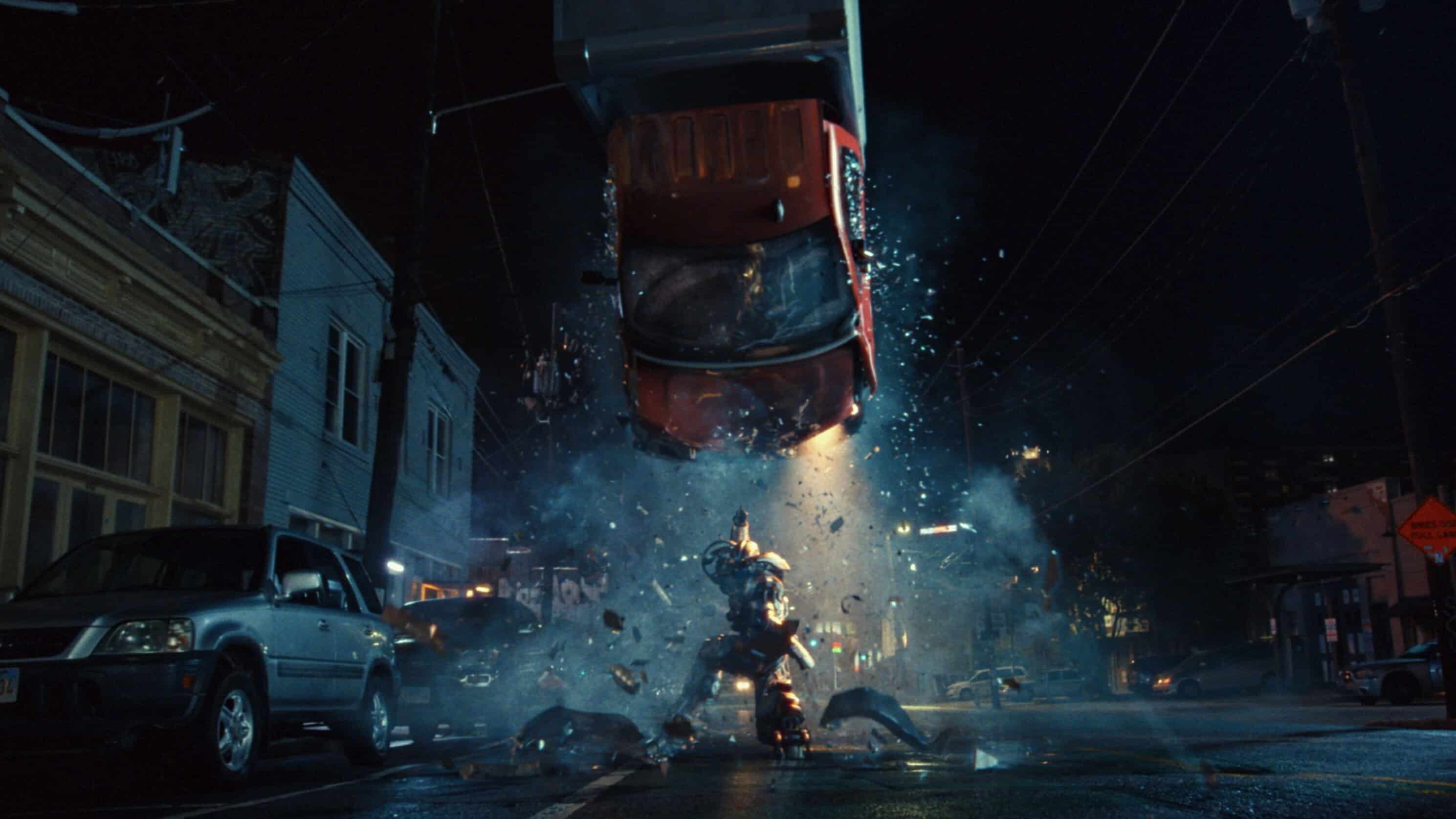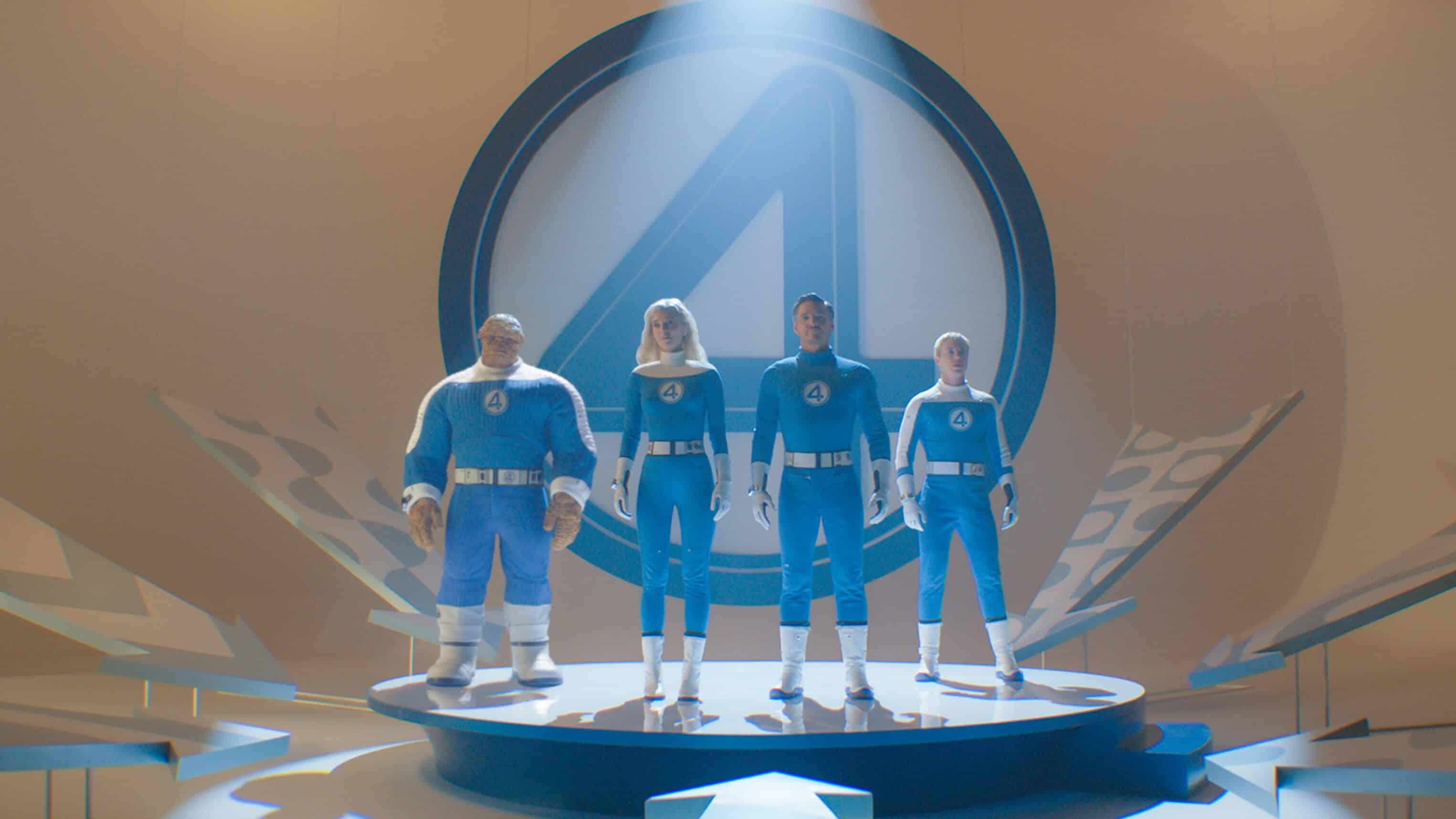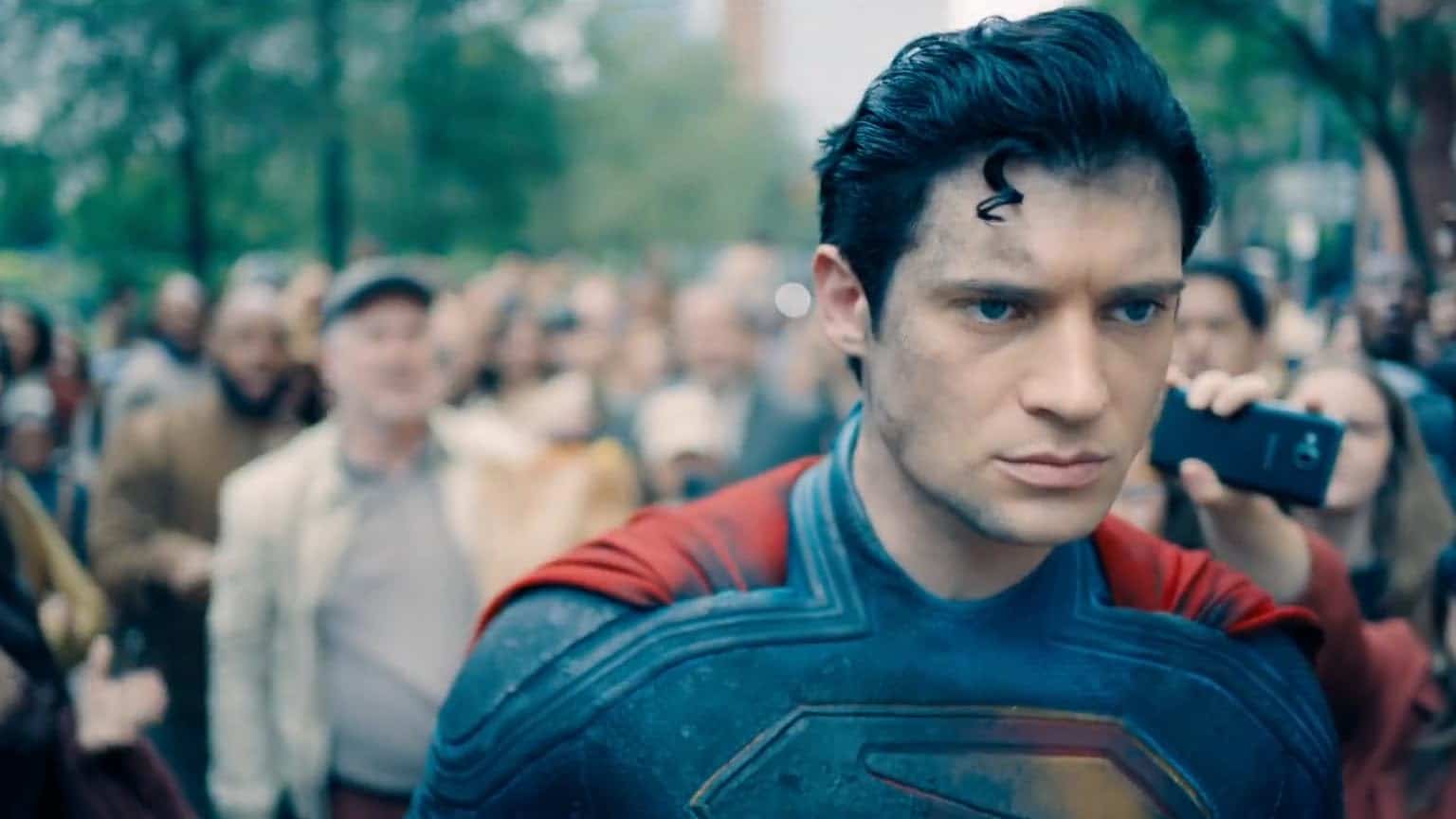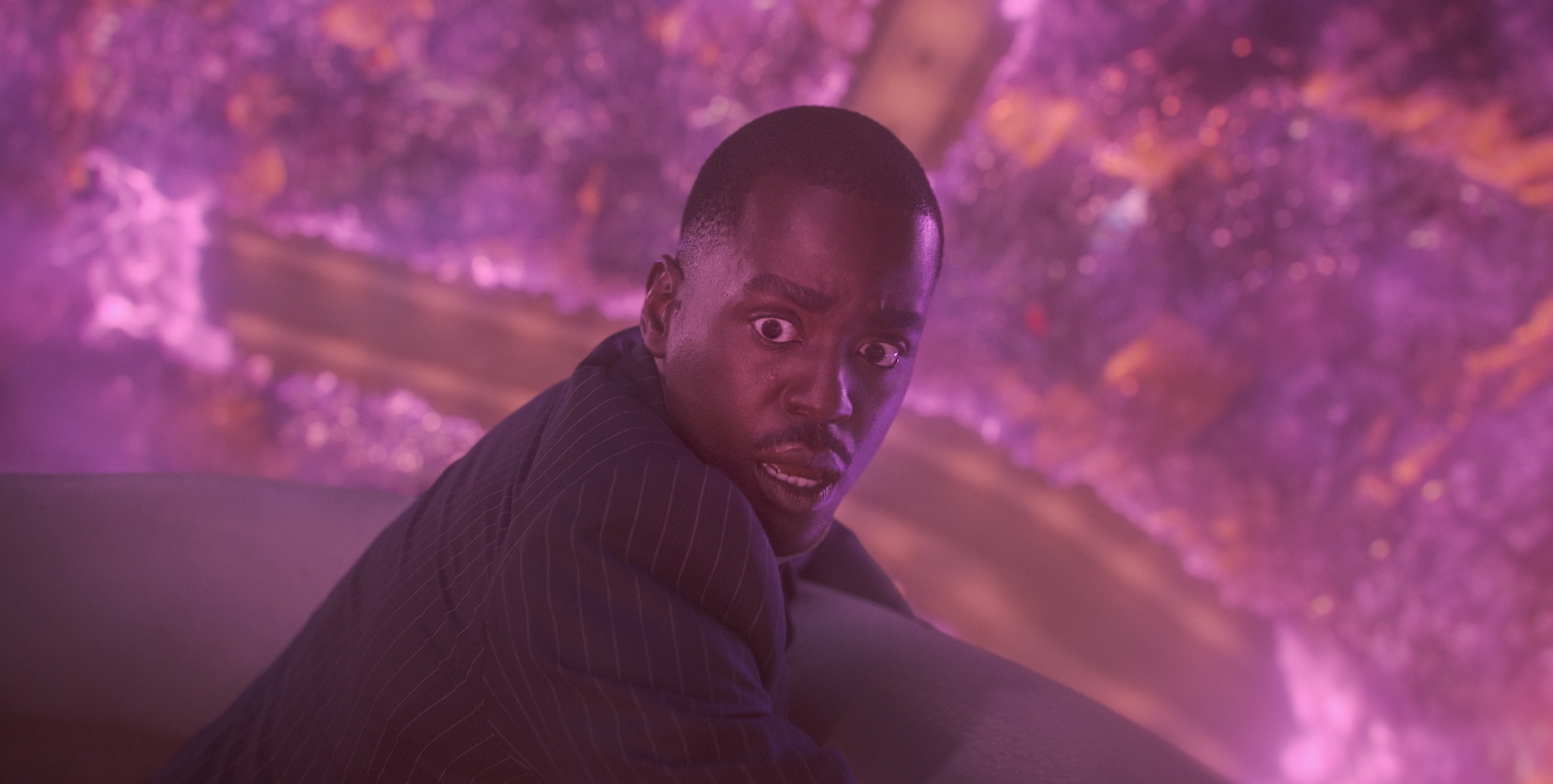Picking up where the original X-Men animated series left off in 1997, X-Men ’97 returns to a familiar yet different world, where Professor X is dead, Jean Grey is pregnant and Bishop is there. But the world still fears and hates mutants, and now the X-Men must find a way to protect it while working alongside their longtime foe, Magneto, in X-Men ’97 1×01, “To Me, My X-Men,” written by Beau DeMayo and directed by Jake Castorena, and 1×02, “Mutant Liberation Begins,” written by Beau DeMayo and directed by Chase Conley.
As promised and teased (somewhat relentlessly) via interviews, ads and promotional material, X-Men ’97 is, right off the bat, a potent hit of nostalgia for the generation of fans who came to the X-Men via the hugely successful if creatively disjointed animated series that aired on Fox from 1992 to 1997. It kicks off with a re-creation of the original opening credits, complete with the catchy theme song that’s become a fixture of MCU stingers of late. The episode titles use the same font as the original. Large portions of the original voice cast, including Cal Dodd as Wolverine and Lenore Zann as Rogue, are back. Original creatives like producers Eric and Julia Lewald and director Larry Houston are working behind the scenes once again. Anyone tuning in to be reminded of the show they loved as a kid likely won’t be disappointed.
Yet somewhat surprisingly, X-Men ’97 doesn’t stop there. Beyond the surface sheen of nostalgia is a series that pushes itself past the confines of the original in ways both expected and surprising, the end result being a show that is far more complex than its forebear, and also a better approximation of comic book storytelling in animated form.

Of course, some of the improvements are simply the result of this series debuting 30+ years after the original, with all the resulting improvements in technology and budget at its fingertips. The animation is, if not groundbreaking, at least a fair sight better than the often cobbled-together-last-minute animation of the ’90s series. A larger budget means an expanded cast of characters, with Morph and Bishop joining the team for X-Men ’97, the first time in the series’ history that the regular cast was changed for more than an episode or two.
It also means more character models, so not everyone has to appear either in their uniform or the same set of civilian clothes in every episode. Gambit makes his X-Men ’97 debut rocking a crop top that is sure to be all the rage in certain cosplay circles. Jean still has her “off-duty” teal pantsuit, but she gets to wear other clothes as well. When the X-Men go play basketball, they get to do it in appropriate athletic wear. Even the opening credits, which remained static for all of the series’ first 76 episodes, get tweaked, with Magneto added in the second episode and new scenes cut into the action montages after the character introductions.
These are mostly cosmetic, relatively minor and not entirely unexpected changes, but they help the series feel like something more than the Saturday morning cartoon for kids it started out as, where the goal (of the network) was to churn out as many episodes for as cheaply as possible, and the creatives involved had to do their best with the material within those confines.
More unexpectedly is a change to the way the series approaches storytelling and adaptation. “To Me, My X-Men” is a mostly original story, picking up in the aftermath of the previous series finale “Graduation Day” and the apparent death of Professor X. The main character arc belongs to Cyclops as he struggles to deal with his grief over Xavier’s death and to find the right balance of control and freedom to lead the X-Men on his own, all colored by the impending birth of his son.

But it also features Sunspot, filling a similar role to Jubilee in the original pilot as an audience POV character being introduced to the world of the X-Men. It spends time on Jean and Cyclops as they discuss a possible future as parents away from the X-Men. It establishes that Wolverine is both angry that they might leave and angry that they haven’t left already (feeling that the X-Mansion is no place to raise a kid). Rogue is shown struggling with her inability to touch anyone, but in a quiet, subtle way (Gambit, true to form, just flirts his way right past her concerns). None of this is revelatory stuff, neither for diehard comic fans nor fans of the original series, but it is notable that it’s all happening in one episode.
The original series was certainly capable of digging inside a character’s head or giving them a spotlight episode to highlight a particular facet of their characterization, particularly in the second season. But when it happened, it was almost always the crux of the episode; that character was the star of that episode; the plot and the other characters existed in support of the star. Here, while each episode has an A-plot and a character or two at its center, an effort is made to showcase at least a few of the rest of the cast in ways that are independent from that A-plot. It creates a sense of interiority for the characters, that they exist even when not called on to contribute to the plot du jour. It also makes the show feel bigger and richer than it previously did.
It also makes the show more like its comic book forebears. Whereas the original series did an often acceptable and occasionally admirable job of adapting some fairly complex comic book stories (the animated “Dark Phoenix Saga” remains the best adaptation of that material despite the efforts of two (2) big budget feature films to do the same), these first two episodes of X-Men ’97 display an ability to adapt the storytelling style of comic books, the rhythms of their pacing and plotting. Rogue’s offhand comment about her frustration with her power in the first episode is both an illustration of her character and the setup for some tension that is introduced in the second episode. That tension, established almost wordlessly, in turn teases the creation of a new relationship dynamic in the series, one which, presumably, will eventually segue into the A-plot of a future episode. This kind of storytelling, in which character and plot intermingle and ebb and flow around the rising and falling into and out of the spotlight of other plots and characters, is a key component of serial storytelling in comics, and it’s something the original series never could quite replicate.

This more complex approach to storytelling also opens the door to adapting more complex X-Men stories.The plot of “Mutant Liberation Begins” is largely lifted from Uncanny X-Men #200, with Magneto being put on trial by the U.N. for his past crimes in the midst of striking an uneasy alliance with the X-Men, to help guide the team in Xavier’s absence. In the comics, Uncanny #200 came at a fascinating time for the series, with writer Chris Claremont having repositioned the X-Men as anti-establishment figures fighting against an anti-mutant status quo (as opposed to the pro-establishment figures fighting to preserve the status quo they were for most of their existence), the capstone of which being the replacement of Professor X with Magneto.
That tension, of the X-Men radicalizing while Magneto moderates as they both try to meet somewhere in the middle, makes the stories of that era some of the most fascinating and interesting in the franchise’s 60+ year existence, and it seems clear from these first two episodes that it’s an era X-Men ’97 intends to explore in depth (It’s also, admittedly, one of my favorite eras of the comic).
To the credit of X-Men ’97, it doesn’t shy away from that tension in “Mutant Liberation Begins,” presenting a Magneto clearly at odds with the established assimilationist approach of Xavier. Early in the episode, he chides the X-Men for not having done more with Xavier’s resources to help mutants. After rescuing a group of Morlocks, the sewer-dwelling mutants shunned by the surface world, from anti-mutant Friends of Humanity soldiers, he still doesn’t let them move into the mansion with the pretty mutants, but he does arrange for them to expatriate to Genosha (which in the cartoon continuity is now a haven nation for mutants).
During his trial, Magneto decries the “sound bite indignation” of the judges, and doesn’t shy away from drawing on (albeit obliquely) his experiences in the Holocaust when defending himself. As in the comic, he is ultimately exonerated after helping save the lives of the judges (as legally squishy a concept here as there), but in this episode, he saves the judges by magnetically carrying them (and their would-be assassin) into the atmosphere high above Earth, to make it clear that he can and would kill all of them, but for the grace of his friend Charles Xavier.

The other big moment in terms of adaptation in this two-part premiere comes toward the end of “Mutant Liberation Begins,” in which Storm loses her powers after being hit by a power-nullifying blast intended for Magneto. While the circumstances are vastly changed, this is lifted in spirit from Uncanny X-Men #185, another story that contributed to the recontextualization of the X-Men. The episode ends with Storm leaving the team, but episode titles suggest she’ll be returning to deal with the ramifications of this change, something with which the previous iteration of the show would have been vastly unprepared to grapple. This version of the series might just pull it off.
“Storm loses her powers” is a plot point that also showcases how X-Men ’97 is using nostalgia to its advantage. The very first line of dialogue we hear from one of the X-Men comes from an offscreen Storm in episode 1, declaring in flowery language the kind of weather she’s calling forth with her powers. It’s something that happened often in the original series, to the point where it almost became a meme, or at least, a common point of amusement among fans. Any returning fans will immediately catch the reference, and it happens again in the second episode, only this time, it’s cut short when she gets hit by the power-nullifying blast. At that point, it becomes clear that the creators began the series the way they did not just as a nostalgic nod to the original, to a stylistic tic recognizable to existing fans, but as a way to lay the groundwork for this plot point, to remind the audience what made Storm, Storm before it was taken away, to make that act, when it happened, that much more impactful. It’s a smart way to have their cake and eat it, too, to use a “Leo pointing meme” moment as something more than just a self-referential nod to the past.

To be fair, X-Men ’97 isn’t displaying, say, Breaking Bad levels of complexity or craft here; we’re still grading on the curve of “Saturday morning cartoon for kids.” And these two episodes are far from perfect. Some of the returning voice actors (understandably) show their age, making the episodes a little jarring in their early goings. The animation, while a vast improvement over the original, is still inconsistent, rendering some fantastic scenes in rich detail (such as a “looking from the bottom up” shot as Storm launches a weather attack inside the UN headquarters just before losing her powers) while at other times, certain details — particularly with character faces — seem to disappear into the animated ether. The dialogue occasionally lapses into awkward bursts of exposition on the level of, “as you know, I will now state the thing I just said you know, for the benefit of anyone else who might be listening.” Magneto’s philosophies, while vastly more complex and incendiary than the bland assimilationist approach of Xavier that defined the series’ original run, still only barely rise above the level of bumper sticker or dorm room speechifying. Bishop is entirely superfluous in these first two episodes, almost an afterthought, which is unfortunate.
Yet for all that, it’s still worth appreciating just how different X-Men ’97 is from the original, and the ways it manages to deepen and improve its storytelling style, opening itself to successfully tell more complex X-Men stories, while still offering the hits of nostalgia it likely needs to survive — particularly because the biggest failing of the show is the fact that it likely offers very little to entice an audience that either wasn’t already a fan of the original series or is into the comics enough to know that’s probably Madelyne Pryor showing up at the end of episode 2 or care that “The Trial of Magneto” is being adapted. If you’re not already in the tank for the X-Men, X-Men ’97 probably won’t change that. But if you are, there’s plenty to like in these first two episodes, which make it clear there is more to the series than the naked nostalgia cash grab it appears to be on the surface.

X-Traneous Facts
- In case there’s any confusion, the series is called “X-Men ’97” because the original ended in 1996, and this is a continuation of that. Context clues (like the date on Xavier’s death certificate) also suggest we’re meant to believe the series is set in that year.
- Professor Xavier is dead — there’s a death certificate and his will comes in the hilarious form of a thick, ornate book — even though the previous iteration of the series ended with him alive but leaving Earth to live out his days with Lilandra. It seems unlikely the returning creators forgot this, but given that Cyclops’ grief seems legitimate, they probably decided to fudge existing continuity for narrative impact.
- Cyclops uses his optic blasts in the first episode to move himself around at speed, something which fits the way his power works but which he never really does in the comics (aside from the occasional “shoot the ground to slow his descent” routine, which also happens here). He also gets to show off his hand-to-hand combat skills (another benefit from the changed circumstances of modern TV is that punching actually gets to happen now).
- Similarly, when Bishop does pop up, he is shown using his “absorb and redirect energy” power way more than he ever did in the original series (or in the comics, frankly).
- Goldballs gets an indirect reference.
- Val Cooper — a staple supporting character from the era of comics being adapted — makes her animated debut in “To Me, My X-Men.” Curiously, she debuts talking to the X-Men while on a treadmill (possibly an homage to a season one episode in which the U.S. president conducts a meeting while on the treadmill for some reason?).
- As we suspected, the basketball sequence is lifted at least in part from X-Men (Vol. 2) #4.
- Storm is referred to as an omega-level mutant, the first time, I believe, that distinction has appeared on the show.
- Another example of the way X-Men ’97 makes these characters seem more dimensional: Jean and Storm are established as close friends (a staple of the comics that never really came up in the earlier version of the show) who have a conversation about Jean’s thoughts on her pregnancy (and which, in hindsight, also foreshadows the big change with Storm).
- As in the comic, Cyclops’ son is born during Magneto’s trial (though the circumstances are vastly different and at least Cyclops gets to show up for it here).
- An alternate explanation for Magneto’s telepathy-blocking helmet is offered up, with Rogue suggesting Magneto adopted it to keep Xavier’s loving presence out of his mind, otherwise he wouldn’t be able to go forward with his crusade.
- A previously unmentioned backstory between Rogue and Magneto is introduced in the second episode, with Rogue referring to Magneto as “Erik” and knowing that she’s able to touch him, all of which seems like setup for a riff on the Rogue/Magneto/Savage Land story in Uncanny X-Men #274-275.
- For as much as the show is drawing on the mid-to-late ‘80s Claremont/John Romita Jr./Marc Silvestri run in these early episodes, the villain of the second episode, and the person who takes away Storm’s powers, is a version of the very ‘90s X-Cutioner.
Austin Gorton also reviews older issues of X-Men at the Real Gentlemen of Leisure website, co-hosts the A Very Special episode podcast, and likes Star Wars. He lives outside Minneapolis, where sometimes, it is not cold. Follow him @austingorton.bsky.social.






